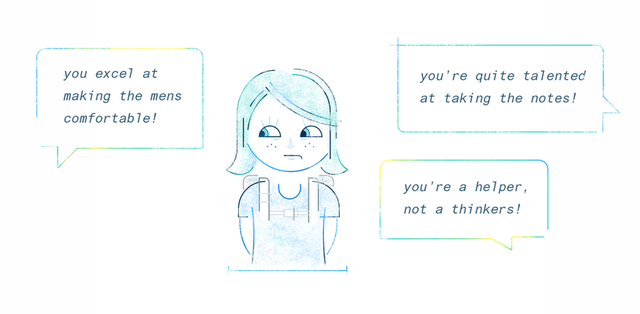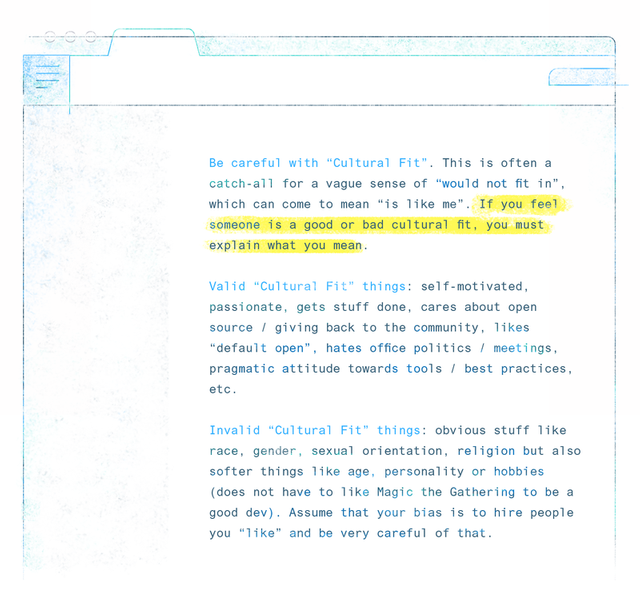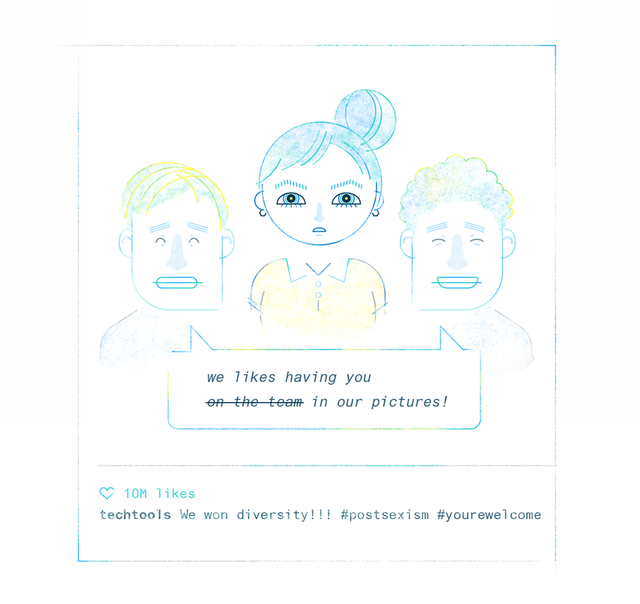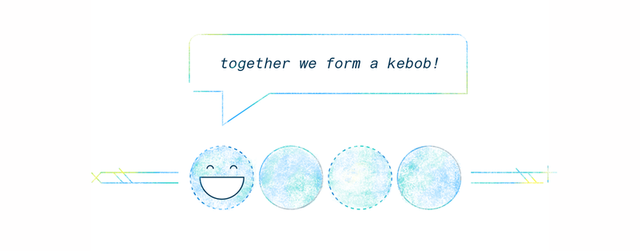Why Stack Overflow is a Good Workplace for Women
When Google released its diversity numbers in 2014, the company [stated] (http://googleblog.blogspot.com/2014/05/getting-to-work-on-diversity-at-google.html), “[We’re] not where we want to be when it comes to diversity, and it’s hard to address these kinds of challenges if you’re not prepared to discuss them openly, and with the facts.”At the time, I was working at a small, venture-backed startup in New York. Diversity quickly became a talking point at the office. “Why is it so hard to find female programmers?” the Engineering lead asked my co-worker, Jess*, and I. “They get swooped up fast,” Jess suggested. “The women I went to school with all got hired by big companies right out of school.”Jess was fresh out of Engineering school. Originally hired as the Executive Assistant, her day-to-day work often supported the engineering team. She wrote SQL queries in order to test and track issues in the database. When the company expanded its utilities database, she pulled together thousands of sources and compiled it into usable data. By the end of the year, she was looking to grow her responsibilities. The current QA Manager was leaving the company, and Jess was recommended to take over the role.Her manager was unconvinced. “You’re really good at customer service,” he insisted. “People like you. You help people. You’re good on the phone.”His response felt unjustified. Jess demonstrated a technical aptitude that was highly compatible with the engineering team. She communicated clearly with engineers, ran the utilities database, and picked up new queries quickly. The company relied on young employees who could learn fast, work long hours, and juggle a wide range of projects. In turn, they were rewarded with opportunities – several employees had joined the tech team from entry-level support roles. It seemed natural that Jess would do the same. Instead, she was tracked into customer service.
Was it because she was different? After all, the tech team was made up of the guys – the kind that casually bragged about their sexual conquests over beer pong. Even though the company wanted technical women in the pipeline, the actual work of equipping them for the same success as their male colleagues was highly questionable.I’d like to share my experience joining Stack Overflow, as well as my experience working on tech teams in the NYC startup community. I’ll also talk about some actionable things that Stack is doing to make the workplace more inclusive.
Joining Stack Overflow
When I joined the Design team in February, I was excited and hopeful. The six-person team is small but mighty, with opportunities to own projects and dream up new features. Every designer executes on a wide range of problems – from designing application flows to illustrating unicorns to building out front-end experiences. On top of that, the role was an opportunity to work with the best developers in the world, building a product that is the largest repository of developer knowledge ever created.In addition to being super excited, I was cynical and burned out. In my experience, tech teams were boys’ clubs, and I figured that Stack would be more of the same. After all, the six people that I interviewed with, as well as every member of the design team, were men. At the time I applied, I counted two female developers on the Team page – more than I’d ever encountered – but not great for an Engineering team of 45.I’ve worked only on all-male Engineering teams. Although I’ve been fortunate to work with many respectful and brilliant men, I’ve also worked with a few who lack basic respect for their female colleagues; in job environments where I felt sexualized and demeaned regularly; and under leadership that tracks female workers into “soft-skills” projects and roles, quietly leaving the technical, highly-valued problems to male workers.I expected a similar culture at Stack – one where I would have to fight constantly to earn the respect that my male colleagues were granted by default – maybe minus the blatant sexual harassment. I’ve been gratified to learn that Stack’s culture toward women is much more positive. Although the Engineering team is predominantly male, the company is taking actionable steps to create a more inclusive workplace.
Addressing unconscious bias
During my first few days at Stack, I came across a document that described our developer hiring practices. This passage caught my attention:
Be careful with “Cultural Fit”. This is often a catch-all for a vague sense of “would not fit in”, which can come to mean “is like me”. If you feel someone is a good or bad cultural fit, you must explain what you mean.Valid “Cultural Fit” things: self-motivated, passionate, gets stuff done, cares about open source / giving back to the community, likes “default open”, hates office politics / meetings, pragmatic attitude towards tools / best practices, etc.Invalid “Cultural Fit” things: obvious stuff like race, gender, sexual orientation, religion but also softer things like age, personality or hobbies (does not have to like Magic the Gathering to be a good dev). Assume that your bias is to hire people you “like” and be very careful of that.
Reading this passage made me look more carefully at our Engineering management. From all appearances, they’re of the status quo (straight white men), but the fact that they choose to define company culture with an ear for unconscious bias is special.Forward-thinking leadership is the first key to shaping an inclusive culture. Even on flat technical teams, managerial attitudes matter a lot – especially on issues that might be “invisible” to the majority of the team. If a manager dismisses casual, misogynistic banter at work as “guys being guys,” then casual, misogynistic banter becomes a valid part of team culture. If a manager hires people who just fit in, it’s easy to “accidentally” create a monolithic culture that is quietly and consistently hostile to difference.
Supportive internal culture
The company hosts regular discussions on internal culture at Stack. These discussions are led by the Diversity and Inclusion Panel, an employee-created committee. Several employees share their experiences via a company-wide chat room, and everyone has the opportunity to discuss and ask questions.During my first month at Stack, Roberta, one of our developers, shared stories of the sexism and microaggressions that she faced regularly at developer events. She described interactions with male attendees ranging from “you should smile more” to “well, if you can get a job [at Stack], then I should apply.”Her tone was refreshingly honest and angry. It was an anger that I identified with. At the same time, I was alarmed that she was discussing these issues while working on a predominantly male team. What if co-workers were unable to relate and became defensive? Or what if managers viewed her anger as a threat? In my experience, this is exactly what happens to team members who speak out about discrimination. At best, their concerns are crudely dismissed: “learn to take a joke” or “don’t be so sensitive.” At worst, management is intolerant of criticism: the employee’s reputation is dismantled, their contributions are phased out, and they are fired.To my surprise, members of the Engineering team were supportive and critical – not just of the industry, but of internal culture. This openness is indicative of a company that wants to embrace true diversity – not just the trendy, cosmetic variety.
A truly diverse workforce is not easy to achieve. To start, it requires openness toward uncomfortable subjects and a commitment to change. So while a supportive, self-critical discussion is just the beginning, it’s a big step in an industry that likes to pay lip service to diversity while silencing and excluding the very people it claims to support.
Valuing introversion
One of my favorite things about working at Stack is the RFC system. The RFC (which stands for “Request For Comment”) is a written document that reviews existing problems, proposes solutions, and solicits feedback. The content can range from anything like a feature proposal to the renaming of an internal tool.The RFC system is valuable because it provides an alternate outlet for sharing ideas. As a written proposal and feedback loop, it accommodates introverted and circular thinkers. This system complements the traditional meeting, which emphasizes more aggressive and extroverted personalities. The result is a unique ideation culture that equally values introversion and extroversion, embraces both circular and linear thinking, and ultimately produces more holistic, creative solutions.
While I can’t say that this approach is specifically valuable to women, I can say that it works well for someone like me – an introverted female who likes to consider problems at every possible angle before presenting a solution. It’s also challenged me to articulate my ideas clearly and quickly on a regular basis. Over the course of five short months, this approach has made me a more confident, thoughtful, and productive designer.
Moving forward
Stack Overflow is just beginning the hard work of creating a diverse, inclusive workplace. So while the culture isn’t perfect, I can honestly say that the company is committed to diversity. It shows. For this reason, I’m proud to stand by Stack’s equal opportunity claims:
We strongly believe that diversity of experience contributes to a broader collective perspective that will consistently lead to a better company and better products. We are working hard to increase the diversity of our team wherever we can and we actively encourage everyone to consider becoming a part of it.
It’s a privilege to work with smart, supportive colleagues every day, and to be provided with the space and resources to excel at my work. Technology is changing the world, and women have unique and valuable perspectives to offer. For the first time since joining the industry, I can confidently say that we are moving forward. It’s truly an exciting time to be a woman in tech.Oh, and Stack Overflow is actively hiring * Name changed
By Donna Choi, Senior Product Designer



